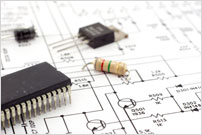February 2017 Issue
A summary of this month's contents.
Solar MPPT Charger & Lighting Controller
(Part 1)
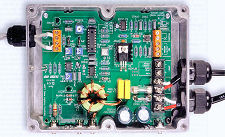 This ‘maximum power point tracking’ (MPPT) solar charger/ light controller will work with 12V or 24V solar panels to charge a corresponding lead-acid or Lithium-Ion Phosphate battery. You can then use the battery to run 12V d.c. lighting or a 12V/24V 230V a.c inverter to power lighting or other moderate mains loads including high-efficiency LED lighting. Provides three stage charging for SLA batteries or two-stage for LiFePO4 batteries*. Light and temperature-sensing, PIR detector and timer controls built-in. An ideal accessory for home, boat or caravan users or as an emergency backup power source. PIC microcontroller based, with free code .hex available from our Library. In Part 1 this month, the circuit outline and principles of operation are described.
This ‘maximum power point tracking’ (MPPT) solar charger/ light controller will work with 12V or 24V solar panels to charge a corresponding lead-acid or Lithium-Ion Phosphate battery. You can then use the battery to run 12V d.c. lighting or a 12V/24V 230V a.c inverter to power lighting or other moderate mains loads including high-efficiency LED lighting. Provides three stage charging for SLA batteries or two-stage for LiFePO4 batteries*. Light and temperature-sensing, PIR detector and timer controls built-in. An ideal accessory for home, boat or caravan users or as an emergency backup power source. PIC microcontroller based, with free code .hex available from our Library. In Part 1 this month, the circuit outline and principles of operation are described.
(*Cell equalisers will be required: see text).
Stereo Valve Preamplifier (Part 2)
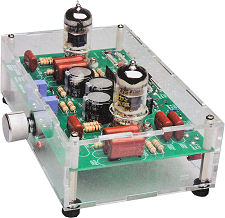 This month’s feature describes the finishing touches of the acrylic case, designed to display the pre-amp's valve-powered goodness in all its glory while at the same time keeping you away from those high voltages. The laser-cut case is custom designed, and is glued and screwed together.
This month’s feature describes the finishing touches of the acrylic case, designed to display the pre-amp's valve-powered goodness in all its glory while at the same time keeping you away from those high voltages. The laser-cut case is custom designed, and is glued and screwed together.
![]() High voltage design suitable for experienced constructors
High voltage design suitable for experienced constructors
Turntable LED Strobe
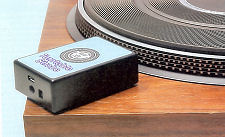 A modern ‘take’ on the traditional ‘neon’ strobe found on better record decks, this design uses modern electronics and a white LED to gauge the accuracy of your vinyl turntable. Designed for both 100Hz and 120Hz operation, this white LED will be of interest to musicians and audio enthusiasts who want to enjoy as near pitch-perfect results from their vinyl collection as possible.
A modern ‘take’ on the traditional ‘neon’ strobe found on better record decks, this design uses modern electronics and a white LED to gauge the accuracy of your vinyl turntable. Designed for both 100Hz and 120Hz operation, this white LED will be of interest to musicians and audio enthusiasts who want to enjoy as near pitch-perfect results from their vinyl collection as possible.
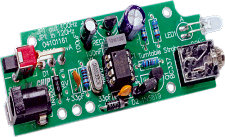 Discrete i.c. design, simple to build. PIC microcontroller based, with free .hex code available from our Library.
Discrete i.c. design, simple to build. PIC microcontroller based, with free .hex code available from our Library.
High Visibility 6-digit LED GPS Clock (Part 2)

The second part of this feature explains the building of the clock’s acrylic case and GPS set-up. Suitable TV remote controls can be used to configure and operate the clock’s features, as explained this month.
Meet the mighty Micromite
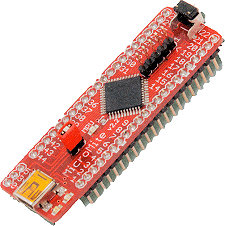 If ever you wanted to harness the power of microcontrollers but found the programming aspects difficult, then this might be for you! The Micromite is a low-cost 32-bit MCU programmed in a Microsoft-compatible version of the BASIC interpreter, with non-volatile memory, floating point, arrays and extensive string handling to name just a few benefits. It arrives in 28-pin DIL or 44-pin SMD packages and can be interfaced to many devices including touch screens and a wide range of sensors. It's compatible with Microchip PICkit 3 and best of all – it’s cheap as chips!
If ever you wanted to harness the power of microcontrollers but found the programming aspects difficult, then this might be for you! The Micromite is a low-cost 32-bit MCU programmed in a Microsoft-compatible version of the BASIC interpreter, with non-volatile memory, floating point, arrays and extensive string handling to name just a few benefits. It arrives in 28-pin DIL or 44-pin SMD packages and can be interfaced to many devices including touch screens and a wide range of sensors. It's compatible with Microchip PICkit 3 and best of all – it’s cheap as chips!
The Micromite is a great concept for electronics hobbyists, especially those who’ve programmed in BASIC, and Micromite offers an ultra-low-cost opportunity to harness the power of microcontrollers in many projects. Climb on board now, starting with Part 1 of this exciting new series where we check the spec. and offers a short tutorial to ensure your Micromite is up and running properly. Part 2 next month describes the editor and interfacing to touch screens. Lots to see and do!
![]() Handy Micromite Links:
Handy Micromite Links:
UK Micromite Shop http://micromite.org/
http://geoffg.net/micromite.html
http://www.thebackshed.com/forum/Microcontrollers
http://www.c-com.com.au/MMedit.htm
Also in this month’s issue
-
Techno Talk revisits supercapacitors, and trends in 3D printing
-
Net Work – utilising Amazon’s Alexa Voice Service, and online privacy considered
-
Circuit Surgery – the Darlington relay switch explained
-
Audio Out – power supply design techniques for power amplifiers
-
PIC n MIX – PICs and the PICkit 3 – A beginner’s guide (Part 9)
-
Max’s Cool Beans – Max’s diorama takes on a new dimension!
-
Electronics Building Blocks – a 4-Channel Car Audio Amp using budget pre-built modules
Next month
Speech Timer for Contests & Debates; Solar MPPT Charger & Lighting Controller (Part 2); Arduino-based Fridge Monitor and Data Logger; Meet the mighty Micromite (Part 2). Subject to last minute change.
EPE is packed with practical electronics projects and theory for the hobbyist. You can order a printed copy of EPE for delivery to your door (worldwide), or try the PDF Version (needs Adobe Reader for Windows), or the Pocketmags for your mobile device. Subscribe now!
![]()
Source code file 0217.zip
 Download Help
Download Help
Can't find what you're looking for? Our Library Help Page offers extensive information and help with downloading files.

The February 2007 issue had a PIC Digital Geiger Counter, a programmable PICAXE Robot Buggy, a car courtesy light delay and a 12V Deep Cycle Charger (Part 2).
PCB artwork
As from July 2013 issue PCB artwork is available free to subscribers only.
Non-subscribers may purchase artwork files for a nominal sum. Please contact our Orders Dept for information or to place an order.
EPE Printed Circuit Boards
We can supply ready-made printed circuit boards (8-digit order codes) to the original design specification via mail order or from our Online Shop.

